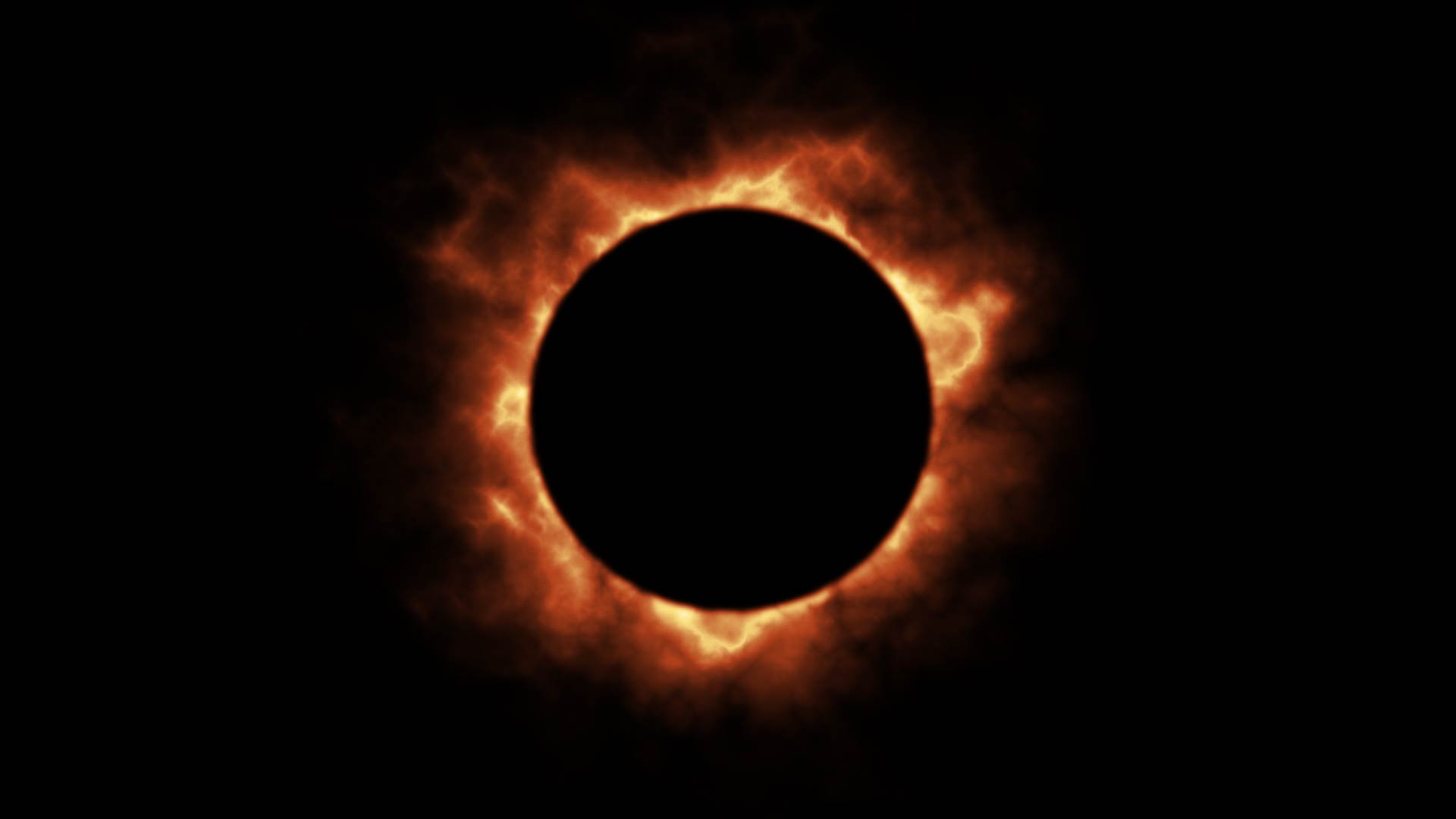
Darkness Descends: Rare Solar Eclipse Captivates US
A total solar eclipse crossed the US on April 8th, the first since 2017. The rare phenomenon, visible from Texas to Maine, darkened the sky for a few minutes in clear areas. People gathered to witness the event, which is estimated to have a $6 billion economic impact. (48語)
日本語訳
「暗闇が訪れる:米国を魅了する珍しい日食」
4月8日、2017年以来初めて皆既日食が米国を横断した。テキサスからメインまで見られたこのまれな現象は、晴れた地域で数分間空を暗くした。人々はこのイベントを目撃するために集まった。経済効果は60億ドルと推定されている。

単語・熟語チェック
・descend 降りる、下る
・rare まれな、珍しい
・solar eclipse 日食
・captivate 魅了する、虜にする
・phenomenon 現象
・visible 目に見える
・darken 暗くする
・gather 集まる
・witness 目撃する
・estimate 推定する
・economic impact 経済効果
単語解説
・solar eclipse
⇒太陽が月に隠されて欠けて見える現象のこと。英語では「solar」が太陽、「eclipse」が食、欠けるという意味。皆既日食は月が太陽を完全に隠し、金環日食は月が太陽より小さく見えるため、縁に太陽の光が輪のように見えます。
・descend
⇒下る、降りるという意味の動詞。「暗闇が降りてくる」というのは、日食の際に太陽が隠れて辺りが暗くなる様子を表現しています。まるで暗闇が空から降りてくるかのような印象的な表現ですね。
・captivate
⇒心を奪う、魅了するという意味の動詞。日食の神秘的な光景に人々が釘付けになる様子を表しています。まるで魔法にかけられたように見入ってしまう、そんなニュアンスが込められていますね。
・phenomenon
⇒現象、特異な事象という意味の名詞。複数形は phenomena。日食のような天文現象や、自然界で起こる珍しい出来事などを指します。日常では見られない特別な光景という意味合いがあります。
・witness
⇒目撃する、立ち会うという意味の動詞。名詞形だと「証人」という意味にもなります。日食を直接見たり体験したりすることを指していますね。歴史的な瞬間に立ち会うという特別感も込められています。
・economic impact
⇒経済への影響、経済効果のこと。大勢の人が日食を見るために動くことで、交通機関や宿泊施設、土産物店などに大きな需要が生まれます。一時的ですが地域経済が潤うことを指していますね。
原ちゃんチェック
日食ってロマンがありますよね。太陽と月と地球の位置関係が絶妙に重なる瞬間に、昼間なのに夜のように暗くなる。そのレアな体験に惹かれる人は世界中にいるんでしょうね。
日本でも2030年に北海道で皆既日食が見られるそうですよ。9年後なので、しっかり計画を立てて準備万端で臨みたいですね。曇りや雨だと台無しになっちゃうから、できるだけ晴れ確率の高い場所を選ぶのがポイントかな。
日食グラスも必需品ですね。太陽を直接見ると目を痛めるから、専用のグラスが欠かせません。あとは記念撮影用のカメラとか、日食を楽しむグッズをそろえておくと良さそう。
現地の経済効果も楽しみですね。宿泊施設は満室になるだろうし、お土産屋さんもいい商売になりそう。みんなで盛り上がって、思い出に残る日食イベントにしたいですね。
関連URL
原田英語深堀りチェック
【天体ショーに関する英単語や英語表現20】
1. Total solar eclipse [皆既日食] – When the Moon completely blocks the Sun’s light, casting a shadow on Earth. (月が太陽の光を完全に遮り、地球に影を落とす現象)
2. Annular eclipse [金環日食] – When the Moon is at its farthest point from Earth and appears smaller, leaving a ring of the Sun’s light visible. (月が地球から最も遠い位置にあり、小さく見えるため、太陽の光の輪が見える現象)
3. Lunar eclipse [月食] – When Earth’s shadow falls on the Moon, making it appear reddish or dark. (地球の影が月に落ち、赤っぽく見えたり暗く見えたりする現象)
4. Blood Moon [ブラッドムーン] – A term used to describe a total lunar eclipse, as the Moon often appears reddish during this event. (皆既月食を表現する言葉で、月が赤っぽく見えることが多いためこう呼ばれる)
5. Supermoon [スーパームーン] – When a full moon coincides with the Moon’s closest approach to Earth, making it appear larger and brighter. (満月が月の地球への最接近と重なり、月が大きく明るく見える現象)
6. Meteor shower [流星群] – A celestial event where numerous meteors (shooting stars) appear to radiate from one point in the night sky. (夜空の一点から多数の流星が放射状に現れる天体ショー)
7. Conjunction [惑星の接近] – When two or more celestial bodies appear close together in the sky, such as a planetary conjunction. (惑星の接近など、2つ以上の天体が空で近くに見える現象)
8. Aurora [オーロラ] – A natural light display in Earth’s sky, predominantly seen in high-latitude regions, caused by charged particles from the Sun interacting with Earth’s magnetic field. (主に高緯度地域で見られる、太陽からの帯電粒子が地球の磁場と相互作用することによって起こる自然の光のショー)
9. Comet [彗星] – An icy, small Solar System body that, when passing close to the Sun, warms and begins to release gases, forming a visible atmosphere and sometimes a tail. (太陽に近づくと温まり、ガスを放出し始める小さな太陽系の天体で、目に見える大気や時にはテールを形成する)
10. Celestial equator [天の赤道] – The projection of Earth’s equator onto the celestial sphere, dividing it into northern and southern hemispheres. (地球の赤道を天球に投影したもので、天球を北半球と南半球に分ける)
11. Equinox [春分・秋分] – The two times a year when the Sun crosses the celestial equator, making day and night of approximately equal length. (太陽が天の赤道を通過する年に2回の時期で、昼と夜の長さがほぼ等しくなる)
12. Solstice [夏至・冬至] – The two times a year when the Sun reaches its highest or lowest point in the sky at noon, marked by the longest and shortest days. (太陽が真昼に空で最も高い、または最も低い位置に達する年に2回の時期で、最も長い日と最も短い日によって特徴づけられる)
13. Asterism [星群] – A prominent pattern of stars that is not officially recognized as a constellation, such as the Big Dipper or the Summer Triangle. (北斗七星や夏の大三角形など、正式な星座としては認められていない目立つ星のパターン)
14. Zenith [天頂] – The point in the sky directly overhead for an observer. (観測者にとって空の真上の点)
15. Nadir [天底] – The point in the sky directly opposite the zenith, below the observer’s feet. (天頂の真反対の、観測者の足下にある空の点)
16. Parallax [視差] – The apparent displacement of an object when viewed from different positions, used to measure astronomical distances. (異なる位置から見たときの物体の見かけの変位で、天文学的距離の測定に使用される)
17. Light year [光年] – The distance light travels in a vacuum in one Julian year (365.25 days), approximately 9.46 trillion kilometers. (光が真空中を1ユリウス年(365.25日)で進む距離で、約9.46兆キロメートル)
18. Astronomical unit (AU) [天文単位] – A unit of length equal to the average distance between Earth and the Sun, approximately 149.6 million kilometers. (地球と太陽の平均距離に等しい長さの単位で、約1億4960万キロメートル)
19. Magnitude [等級] – A logarithmic measure of the brightness of an object in astronomy, with lower numbers representing brighter objects. (天文学における天体の明るさの対数的な尺度で、数値が小さいほど明るい天体を表す)
20. Syzygy [シジジー] – The nearly straight-line configuration of three or more celestial bodies in a gravitational system, such as during a solar or lunar eclipse. (日食や月食の際のように、重力系内の3つ以上の天体がほぼ一直線に並ぶ配置)






